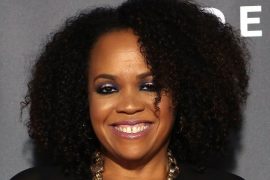Maria Corazon Aquino was the first female Philippines’ President. Originally, she was just a housewife, more interested in caring for her family and supporting her husband, Senator Benigno S. Aquino, in his political pursuit. Nevertheless, when Benigno was assassinated at the Manila Airport on his return from exile by Marcos’ men, she could no longer stay adamant. Soon after the death of her husband, she became the anchor point for the democratic movement in the Philippines and the most sacrosanct personality in People’s Power Revolution (PPR), also known as Yellow Revolution. This movement toppled the twenty-year-old regime of President Ferdinand Marcos. Owing to her resilience, she ended up becoming a leader in so many fronts in her country and was later became the President of Philippine.
Her Early Life Story
This lioness, Maria Corazon “Cory” Sumulong Cojuangco Aquino was born in 25th of January 1933. In 1955 she got married to her husband, Benigno Aquino (Ninoy) after graduating from Mount St. Vincent College in New York City, a young politician. She supported her husband’s dreams a politician who later elected as a senator of the country. Corazon Aquino had five (5) children.
As an elected senator of the country, Ninoy Aquino her husband became a popular and persistent opposition to Ferdinand Marcos, the dictator who was on the seat of the presidency since 1965. In 1972, Ninoy was imprisoned owing to his activism and support for a fair democracy in the country for eight long years and then exiled to the United States. When her husband Benigno Aquino was due to return to Philippine after serving his jail time in 1983, he was assassinated immediately he stepped into Philippine.
Her husband’s imprisonment, exile, and assassination caused outrage among his supporters and spurred Ferdinand’s opposition. The economic state of the country experienced further deterioration, and the government went into more debt.
After Benigno Aquino’s assassination, Corazon took his place as the leader of the opposition. There was a twist 1985 when Ferdinand suddenly announced an election to legitimize his hold on the country. Corazon as the leader of the opposition party was reluctant to run at initially, but after much persuasion by the supporters of her husband, she changed her mind and decided to run for the position of the president in her country.
In the course of her running for the presidential position, Ferdinand Marcos tried to tarnish her image with sexist statements, saying she was ‘just a common woman’ whose only expertise was just in the kitchen and the bedroom. Corazon in response to Ferdinand’s statement stated “May the better woman win in this election.” He further attacked her stating her inexperience in politics and public service. She also replied by admitting that she had “no experience in cheating, lying to the public, stealing government money, and killing political opponents.”
Ferdinand Marcos was declared the winner of the election after it was held in February 1986. Owing to the anomalies that marred the conduct of the election, lots of issues and agitations were raised about the outcome of the election. It was also condemned by the Catholic Bishops’ in their Conference in the Philippines and also by the United States Senate. The then President of America, Ronald Reagan called condemned the irregularities of the election and tagged the act ‘disturbing’.
Corazon Aquino solicited for support from her sympathizer and immediately organized peaceful civil disobedience protests and strikes and for mass boycotts of the media and businesses owned by Marcos. Her supporters and other Filipinos were very supportive. These popular, peaceful demonstrations came to be known as the People Power Revolution (PPR). As a result of the protests, Marcos ordered troops against the thousands of protesters (including whole families and nuns and priests) but not a shot were fired and the troops withdrew and many defected.
The political restiveness in the country made Ferdinand Marcos flee the country to Hawaii in the United States in February 1986 thereby making Mary Corazon Aquino the first female President of the Philippines.
Her taking over the number position as the President of her country marked a new civilization in the Philippines. Her few months in office as the President of the country ushered in great developments and changes both in the political and economic sector of the country. She immediately set up a Constitutional Commission that will be in charge of drafting a new constitution that ushered in the bicameral congress which limited the powers of the Presidency.
She also set up the Presidential Commission on Good Governance that initiated a process of trying and recovering all the ill-gotten wealth of Ferdinand Marcos. Her stay in office was not devoid of obstacles but one filled with lots of coup attempts from the opposition and sympathizers of Ferdinand Marcos. But this did not deter her from being persistent and resilient in her work for her country.
Corazon Aquino’s new Administration maintained a strong emphasis and concern for civil liberties and human rights, and peace talks with communist insurgents and Muslim secessionists. Madam President (Corazon) also focused on bringing back economic health and confidence of the country. The new Philippines administration succeeded in paying off about $4 billion of the country’s outstanding debts.
Corazon Aquino apart from being an advocate of good governance was also a lifelong member of the Council of Women World Leaders, an international organization of former and current female heads of state and government that helps to mobilize women world leaders to intervene or take action on issues critical to the leadership, empowerment and development of women.
Corazon who was still the President of her country in 1992 decided to decline the requests for her to seek re-election. She wanted to be a pacesetter to both citizens and politicians, against the view of Ferdinand Marcos, that the presidency is not a lifetime position.
She was still very active in the public service and very often voices her views and opinions on the pressing political issues which earned her a lot of accolades. Corazon Aquino in 1992 was cited as one of ‘100 Women Who Shaped World History’ in a reference book written by Gail Meyer Rolka. She received the J. William Fulbright Prize for International Understanding in 1996 from the Fulbright Association. This award has also been received by Jimmy Carter and Nelson Mandela. She was chosen by ‘Time Magazine’ as one of the 20 Most Influential Asians of the 20th century. Corazon Aquino in 2002 became the first woman to be named in the Board of Governors of the Asian Institute of Management.
Corazon Aquino was diagnosed with colorectal cancer in 2008 and in 1st of August 2009; Mary Corazon Aquino was announced dead as a result of her ailment. Corazon Aquino’s death spurred a worldwide reaction and a lot of sympathizers attended her wake and funeral. Sequel to her great works, the Catholic Church in the Philippines felt there was a need to canonize and declare her a saint.
The United States’ former Secretary of State Hillary Clinton stated that Corazon Aquino was “loved and admired by the world for her extraordinary courage” in leading the fight against dictatorship and tyranny. Also, Pope Benedict XVI commended her “courageous commitment to the freedom of the Filipino people, her strong rejection of violence, oppression, and intolerance”
Mary Corazon Aquino was a great and amazing woman who had a terrific impact on the freedom and welfare of millions of Filipinos and the rest of the world. She achieved so much in her life and was loved and cherished by many.
By Emekpo Charles




